AI in Integrated Pest Management Systems
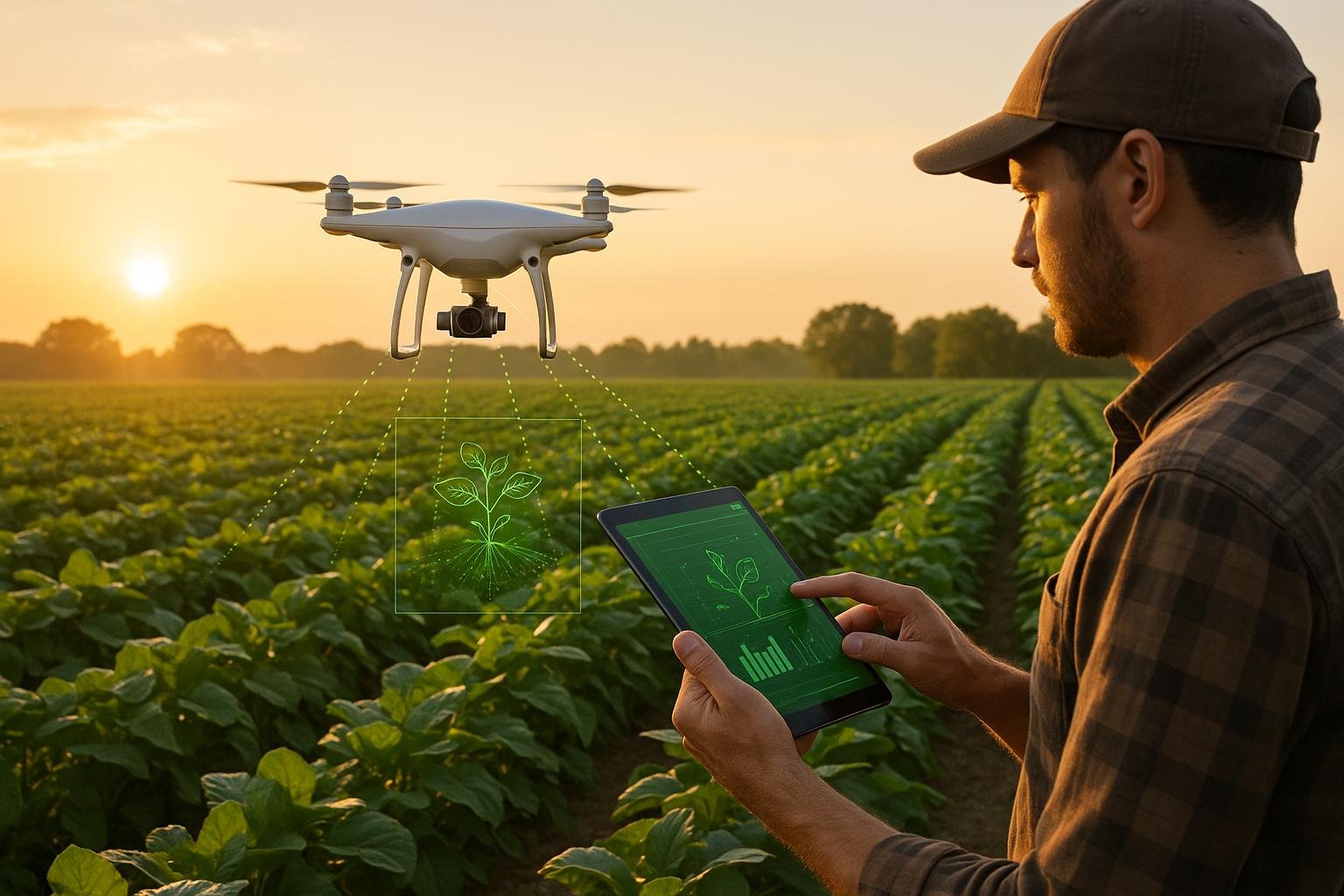
AI is changing how farmers manage pests. By using tools like machine learning and sensors, AI improves pest detection, monitoring, and control. This leads to faster identification, better resource use, and fewer chemicals. While traditional methods rely on manual work and experience, AI offers precise, real-time solutions that save time and reduce costs. However, high setup costs and technical needs can be a challenge for smaller farms. Combining AI with existing practices creates a smarter, more efficient pest management approach.
Key Takeaways:
- AI uses data from sensors, cameras, and weather to predict pest activity.
- Faster and more accurate than manual pest scouting.
- Reduces chemical use and labor costs over time.
- High initial investment but offers long-term savings.
- Smaller farms can start with simpler tools before fully adopting AI.
AI isn’t replacing traditional methods - it’s improving them. Farmers can now make more informed decisions, protect crops more effectively, and support natural pest control systems.
“Artificial Intelligence: A Game Changer in Agricultural Pest and Disease Management”

1. Traditional Biological Pest Control Systems
Traditional biological pest control has long been a key practice in sustainable farming across the U.S. By leveraging natural predators, parasites, and other beneficial organisms, these methods have laid the groundwork for modern integrated pest management (IPM) systems. However, traditional approaches come with certain challenges that can affect their overall effectiveness and adaptability.
Detection Speed and Accuracy
Manual field scouting, a cornerstone of traditional pest control, is often slow and inconsistent. Factors like weather conditions, crop density, and pest behavior can make it difficult to gather reliable data. While tools like sticky traps and pheromone lures are commonly used to improve monitoring, they require regular maintenance and frequent checks to remain effective - adding an extra layer of effort.
Resource Efficiency
These methods are labor-intensive, requiring significant human effort for monitoring, identifying pests, and making decisions. Record-keeping is often done on paper or through basic digital tools, making it harder to track long-term trends or detect subtle changes in pest and predator populations. Without precise data, decisions - such as when to release beneficial organisms - are typically based on general experience rather than specific environmental conditions. This can lead to missed opportunities for timely and efficient interventions, especially when compared to modern, data-driven approaches.
Environmental Impact
One of the key strengths of traditional biological pest control is its lower environmental footprint compared to chemical-heavy alternatives. Practices like releasing beneficial insects and maintaining habitats with hedgerows or cover crops help support local ecosystems. However, these methods often lack precision. Broad, untargeted applications can sometimes disrupt local ecological balances, and insufficient monitoring may lead to unnecessary interventions or missed chances for natural pest suppression.
Cost-Effectiveness
Although equipment costs are relatively low, the labor required for traditional methods drives up expenses. Purchasing beneficial organisms based on standard recommendations, rather than actual pest pressure, can lead to inefficiencies. Delays caused by manual monitoring may allow pest populations to grow unchecked, leading to higher costs in the long run. Additionally, fragmented record-keeping makes it difficult to evaluate the return on investment or refine pest control strategies. These limitations highlight the need for more advanced, data-driven solutions to improve efficiency and outcomes.
2. AI-Powered Biological Pest Control Systems
AI technology is reshaping biological pest control in the United States, addressing the limitations of traditional methods. By combining machine learning algorithms with sensor networks and automated monitoring, these systems offer farmers a more precise and efficient way to manage pests. Unlike older approaches that rely on manual observation and experience, AI-driven tools analyze vast amounts of real-time data to optimize pest control strategies.
Detection Speed and Accuracy
AI-powered monitoring systems are far quicker and more accurate than manual scouting. Tools like computer vision and multispectral drone sensors can identify pest species, beneficial insects, and crop damage with remarkable precision, eliminating the need for daily manual inspections.
Machine learning models trained on large datasets help differentiate between similar species, minimizing errors in identification. By integrating weather data, these systems can predict pest emergence and migration patterns, enabling farmers to act proactively rather than reactively. This level of accuracy ensures better resource use and faster response times.
Resource Efficiency
AI systems are revolutionizing how farmers allocate resources for pest control. Predictive analytics allow for the precise deployment of beneficial organisms based on real-time pest activity rather than following generic schedules.
These systems also automate record-keeping, tracking pest populations, environmental conditions, and treatment results. This not only refines strategies over time but also simplifies documentation for organic certification.
Additionally, AI enables precision timing by analyzing multiple environmental factors simultaneously. Instead of releasing beneficial insects based on broad guidelines, farmers can align releases with the best environmental conditions, improving outcomes and reducing the need for repeated interventions.
Environmental Impact
AI-driven pest control systems help minimize environmental impacts by making pest management more targeted. Real-time monitoring can determine when natural predator populations are sufficient, avoiding unnecessary supplemental releases.
Using data on microclimates, soil conditions, and pest pressure, AI can identify the best locations for cover crops, hedgerows, and refuges. Weather monitoring integration further enhances farmers' ability to predict how environmental changes will affect both pests and beneficial organisms. This allows for strategies that align with natural cycles, reducing disruptions to the ecosystem.
Cost-Effectiveness
While adopting AI systems can require a significant upfront investment, the long-term financial benefits are compelling. Reduced labor costs for scouting and monitoring can make these systems particularly cost-effective for larger farms, often recouping the initial expense within a few growing seasons.
AI-based recommendations tailored to actual pest activity help cut down on expensive reactive treatments. Early detection and timely responses can prevent small pest problems from escalating into major infestations, saving money in the long run.
Moreover, the comprehensive data tracking provided by AI systems enables farmers to assess the financial returns of their pest control strategies. With insights into what works best under specific conditions, farmers can continuously fine-tune their approaches to achieve better results while keeping costs under control.
sbb-itb-4d6a8dd
🚀 Ready to Reinvent Your Garden?
Join thousands of homeowners who have transformed their gardens using our AI design tool. Upload one photo to explore endless possibilities.
Get your AI garden designs →Pros and Cons
When deciding between pest management techniques, farmers often find themselves comparing traditional methods with modern AI-driven systems. Each approach comes with its own strengths and challenges.
| Aspect | Traditional Biological Control | AI-Powered Systems |
|---|---|---|
| Detection Speed | Relies on manual inspections, which can be time-intensive and scheduled infrequently. | Provides continuous monitoring and real-time alerts via automated systems. |
| Accuracy | Depends on human expertise, which can sometimes result in errors or misidentifications. | Utilizes data analytics to achieve highly precise species identification. |
| Initial Investment | Requires a lower upfront cost, making it more accessible for smaller farms. | Demands a higher initial investment for advanced equipment and software, which can be a hurdle for smaller operations. |
| Labor Requirements | Needs consistent manual effort for field monitoring and scouting. | Automates data collection, significantly reducing manual labor after setup. |
| Resource Efficiency | Often uses broad, scheduled interventions, which may not align with immediate field needs. | Enables targeted, real-time interventions, reducing waste and optimizing resource use. |
| Environmental Impact | Timing inconsistencies can disrupt the balance between pests and their natural predators. | Supports ecosystem balance through precise, targeted actions. |
| Learning Curve | Relies on years of field experience to develop expertise. | Requires minimal training to integrate into current workflows. |
| Scalability | Expanding operations increases labor and costs proportionally. | Designed for scalability, with automation improving efficiency as farm size grows. |
This table highlights the operational differences between the two approaches, offering a clear view of how they fit into integrated pest management strategies.
Traditional biological control methods are valued for their straightforwardness and accessibility. However, these approaches can falter in delivering consistent results, as factors like weather, human error, and scout availability can disrupt the timing and effectiveness of pest control efforts.
On the other hand, AI-powered systems shine in precision and efficiency. By leveraging real-time data, these systems optimize pest control timing and resource allocation, often leading to reduced waste and better outcomes. Many farmers report that targeted interventions not only improve pest management but also cut down on long-term costs.
That said, adopting AI technology isn't without its challenges. The substantial upfront cost can be prohibitive for smaller farms. Reliable internet access and periodic software updates are also necessary, which can pose difficulties in remote areas. Additionally, integrating AI systems into existing workflows requires some initial adjustments and staff training. However, in the long run, these systems can simplify processes like organic certification and regulatory compliance.
While traditional methods are easier to implement immediately, they may lead to higher long-term costs due to inefficiencies. AI-powered systems, though requiring a larger initial investment and some time to adapt, often deliver measurable benefits as they fine-tune their performance to the specific conditions of each field.
Conclusion
The use of AI in biological pest management is changing the way crops are protected. Traditional methods have served agriculture for years, but the precision and efficiency of AI-powered tools are reshaping how farmers tackle pest control.
AI systems bring real-time monitoring and targeted interventions to the table. However, the high initial costs and technical expertise required can be challenging for smaller farms. These obstacles highlight the need for gradual adoption, often through a mix of traditional and AI-based methods.
Looking ahead, the potential for AI in pest management is growing. As technology becomes more affordable and accessible, smaller farms are gaining access to cloud-based tools and user-friendly interfaces that lower the barrier to entry. This shift is making it easier for farms of all sizes to benefit from advanced analytics.
The most effective strategies combine AI's precision with the knowledge and experience of seasoned farmers. Rather than replace traditional practices, AI enhances them, creating a hybrid approach that balances decades of agricultural expertise with cutting-edge technology.
For farmers, aligning AI adoption with their specific needs is key. Larger farms or those facing consistent pest challenges often see quicker returns on investment. On the other hand, smaller operations might start with simpler monitoring tools before fully integrating AI solutions.
FAQs
What are some cost-effective ways for small farms to adopt AI in pest management systems?
Small farms can ease the cost of adopting AI by teaming up with nearby farms to share expenses for tools and equipment. This cooperative method helps spread the financial load, making advanced technology more accessible without overwhelming individual budgets.
Another practical step is starting with affordable AI options, like systems that rely on satellite imagery or small, low-cost AI robots designed for pest detection. These solutions deliver precision and efficiency without demanding hefty upfront investments.
By using these approaches, small farms can incorporate AI into their pest management strategies, allowing for early pest detection and precise interventions - all while keeping expenses under control.
What AI technologies are most effective for detecting and monitoring pests in integrated pest management systems?
AI technologies, such as machine learning and computer vision, are transforming pest detection and monitoring. Machine learning algorithms excel at analyzing images and sensor data to uncover patterns, while computer vision uses image recognition to accurately spot and classify pests.
Other advanced tools include thermal sensors for tracking pest activity, drones (UAVs) for large-scale field monitoring, and AI-powered environmental sensors that measure temperature, humidity, and other factors that might signal pest presence. Together, these technologies improve the precision and effectiveness of integrated pest management systems.
How does AI improve sustainability and reduce the environmental impact of pest management in farming?
AI is transforming farming practices by enabling targeted pest control, significantly cutting down on the need for broad pesticide application. This precision helps maintain soil and water quality by reducing chemical runoff and lessens the impact on helpful insects and other wildlife.
Beyond that, AI plays a key role in ecological pest management by analyzing data to forecast pest activity and suggesting natural solutions. These may include introducing predator species or fine-tuning crop rotation schedules. Such methods not only limit the use of chemical pesticides but also encourage biodiversity, creating healthier and more robust agricultural ecosystems.
Related posts
Related Articles
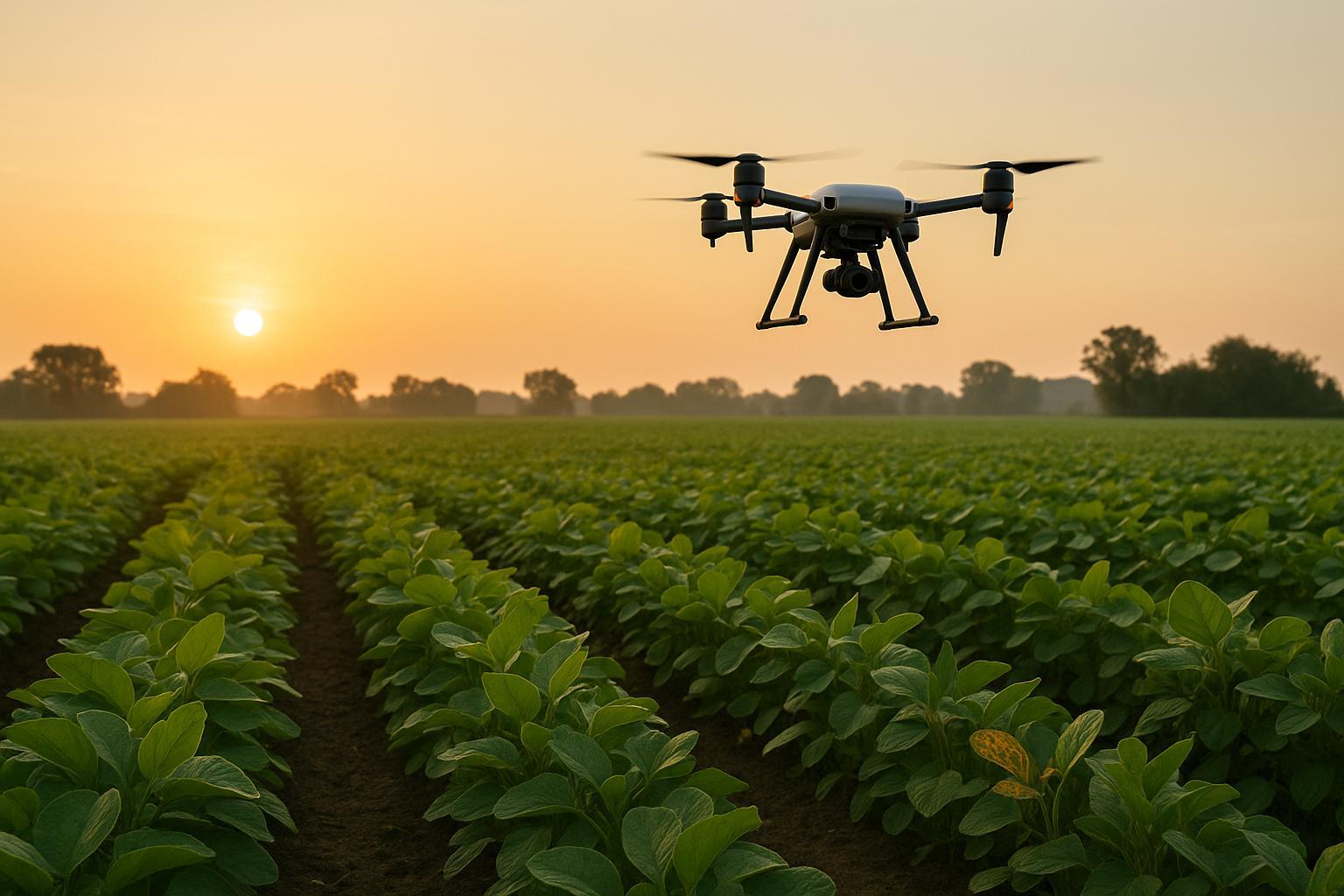
How AI Analyzes Drone Pest Data
AI-driven drones revolutionize pest management in agriculture by enabling early detection and precise treatment, enhancing crop health and sustainability.
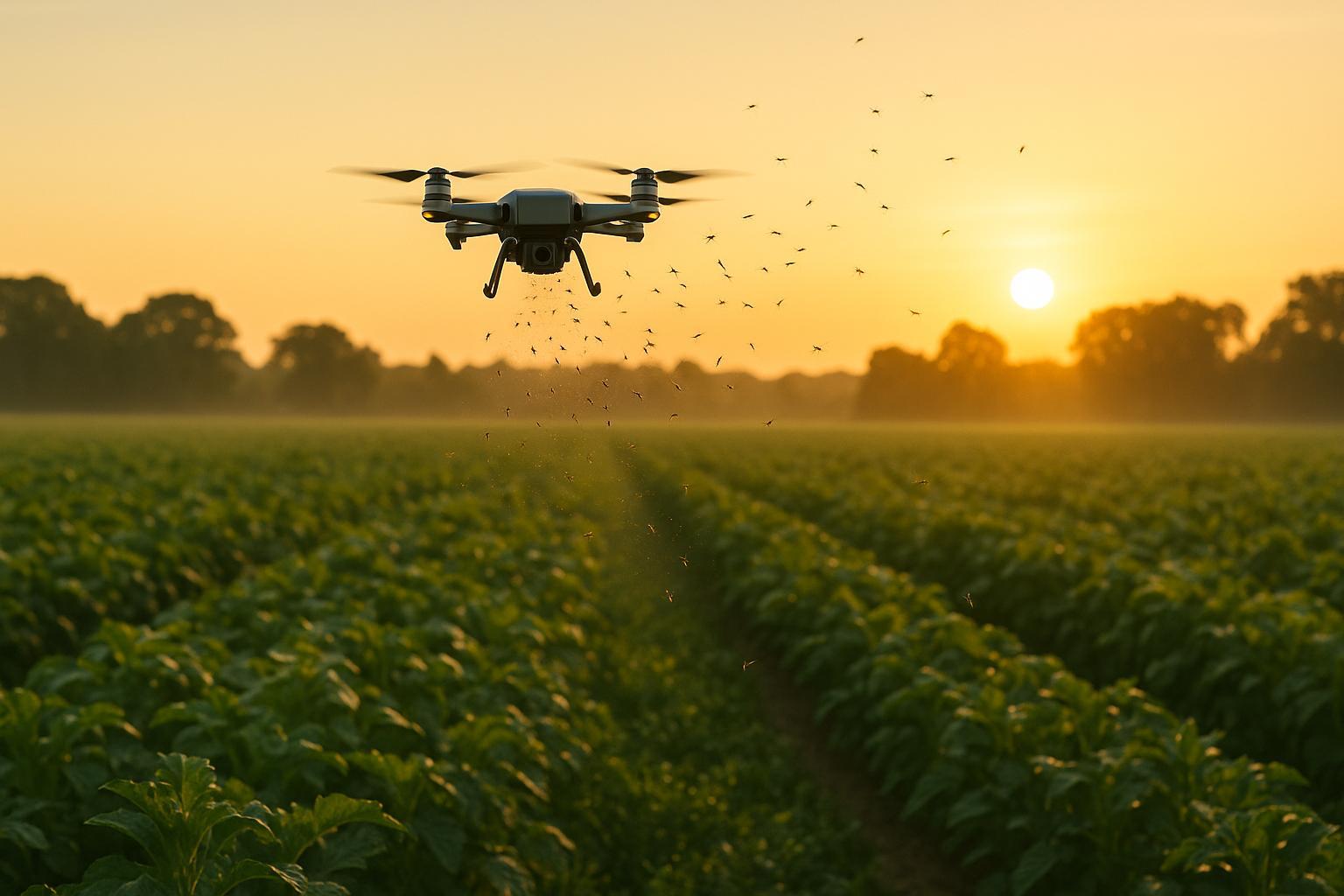
AI Timing for Parasitoid Releases
AI enhances the timing of parasitoid releases for pest control, improving effectiveness and reducing costs through data-driven insights.
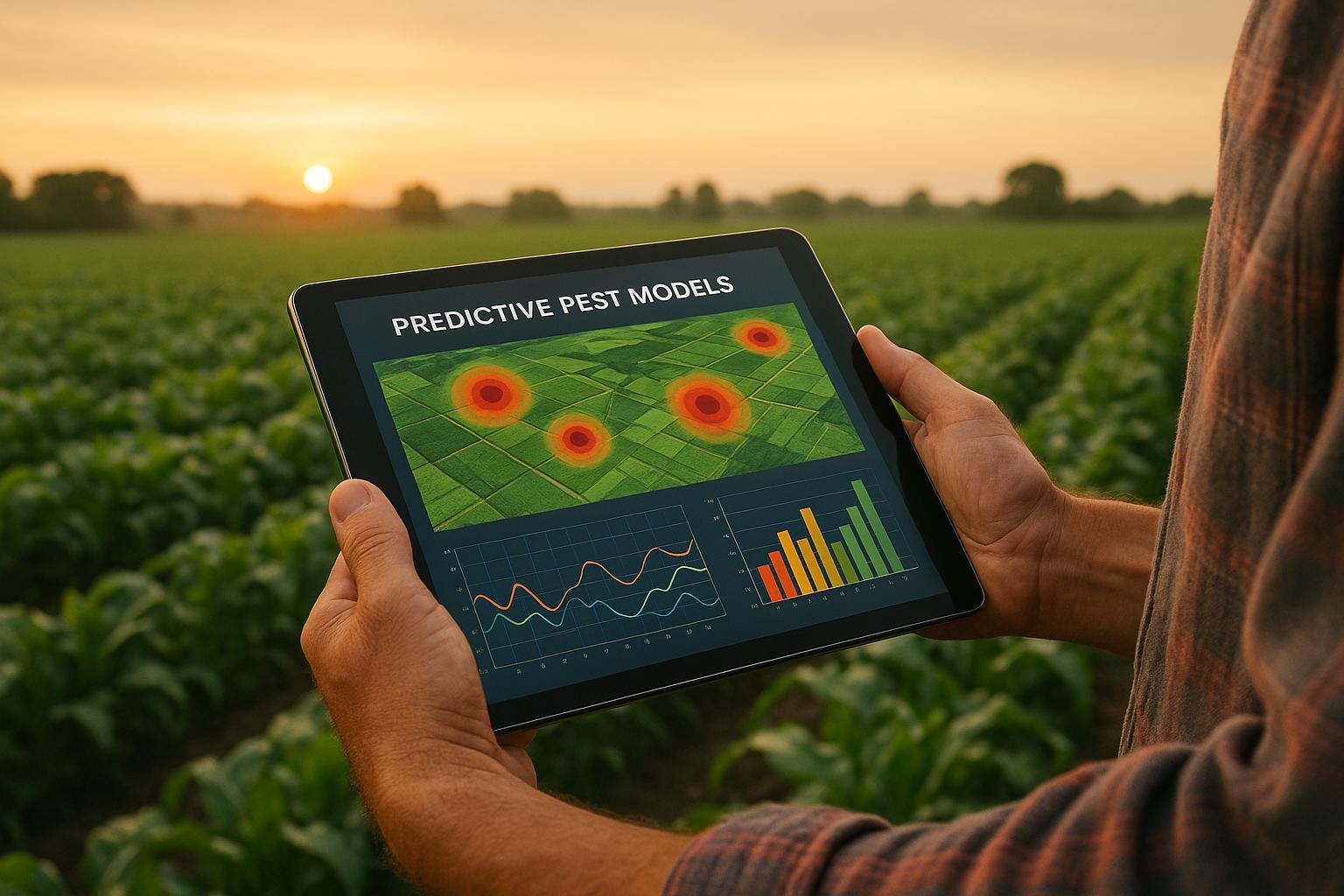
Predictive Pest Models: How They Work
Explore how predictive pest models harness data and AI to forecast infestations, reduce pesticide use, and enhance crop yields sustainably.

Ultimate Guide to Using Wood Shavings for Mulch in Your Garden
Explore the benefits of using wood shavings for mulch, how to apply them effectively, and tips for buying quality wood shavings. Compare with other mulching materials and make an eco-friendly choice for your garden.
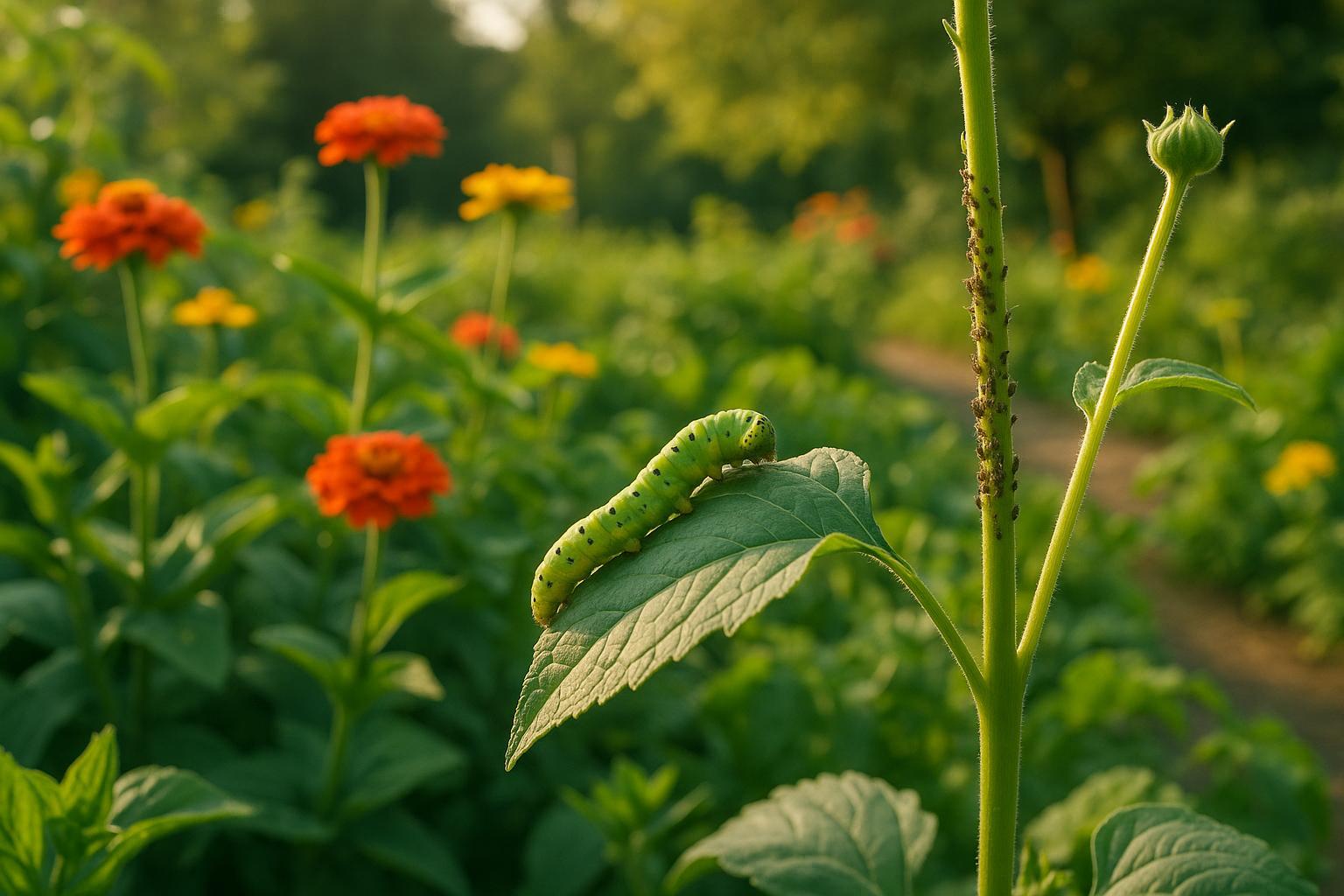
How Climate Affects Pest Risks in Gardens
Climate change is altering pest behaviors, leading to increased risks in gardens. Learn how to adapt and manage these challenges effectively.
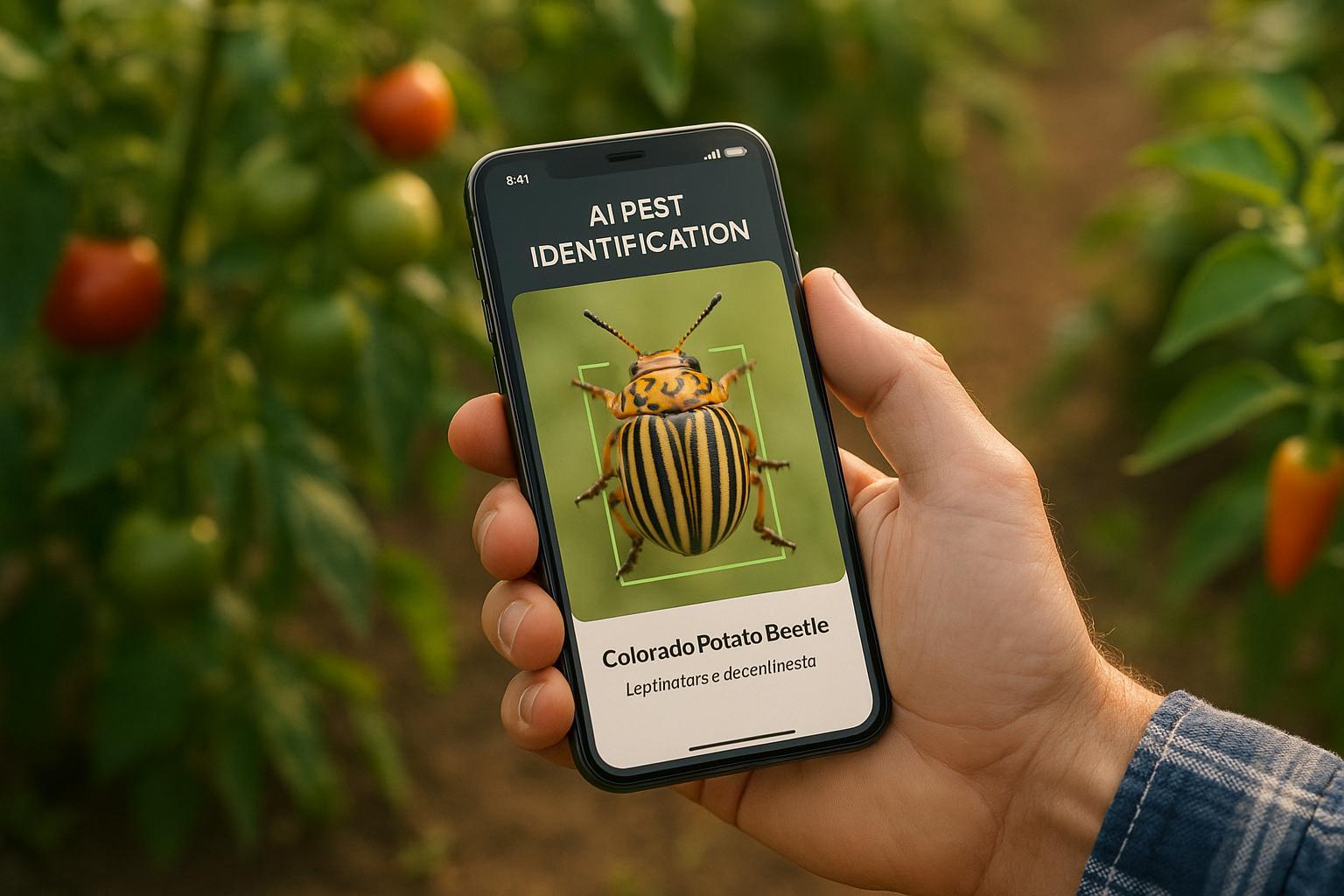
Ultimate Guide to AI Pest Identification Tools
Explore how AI pest identification tools revolutionize pest management for gardeners and farmers, offering efficiency, accuracy, and sustainability.